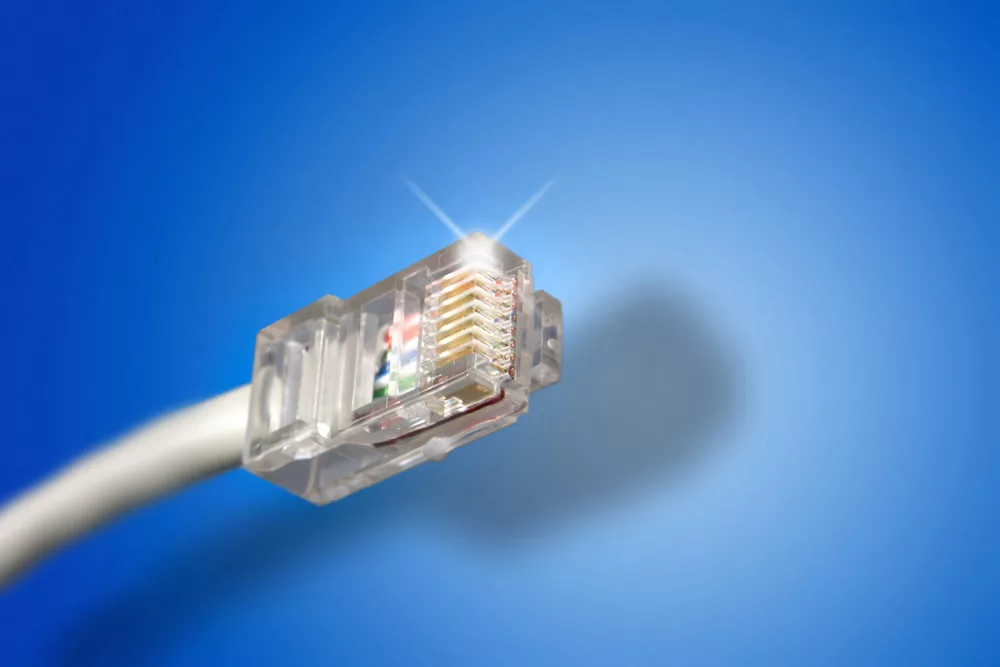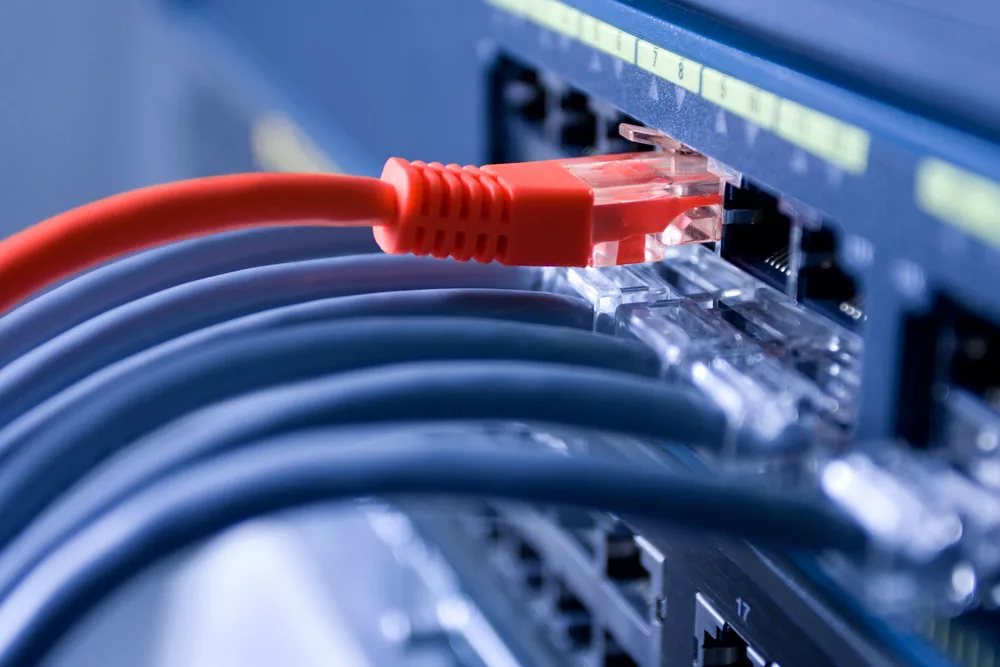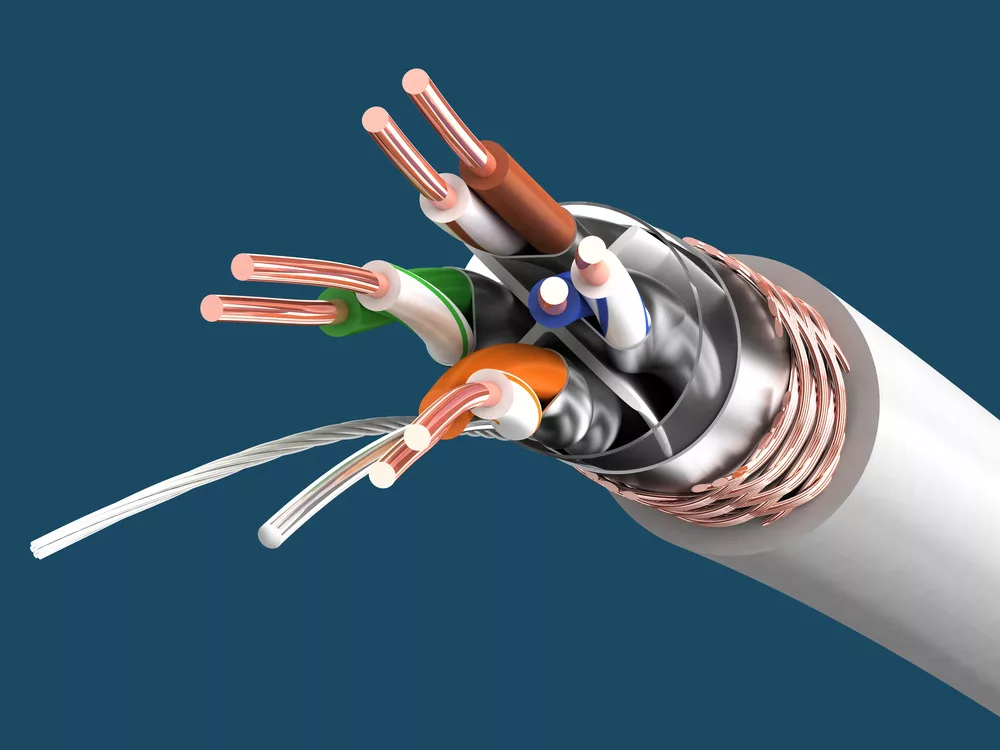Ethernet cables are the network’s spinal cord, serving as a conduit for signals to travel from one device to another, with high-bandwidth cables enabling faster data transmission.
However, like many other things, the cables can deteriorate, and innocuous Ethernet cables cause connection issues.
This article will examine whether an Ethernet cable can go bad and what causes Ethernet cable failure and provide Ethernet cable care tips.
Table of Contents
- What Causes Ethernet Cable Failure?
- How to Tell If an Ethernet Cable Is Not Working Correctly
- Ethernet Cable Care Tips
- Bottom Line
What Causes Ethernet Cable Failure?
There are several reasons an Ethernet cable may fail. Let’s examine each of these potential reasons in more detail.
Physical Damage
It’s among the simplest to avoid because it all begins with how well you maintain your cables.
Ethernet cables can get physical damage due to wear and tear, such as bending or twisting the wire too tightly, cutting or nicking the cable, or pushing the line too hard.
Inside Ethernet cables, there are four pairs of copper wires, for a total of eight copper wires. These cables use copper wire to transport data from one location to another.
When a system at one end of the cable wants to send information to another system at the other end of the cable, it creates a data message for the other system.
If the copper wires inside the cable break or malfunction, electrical pulses won’t travel from one cable end to the other.
That will distort the sent data if the electric signals have difficulty traveling through the Ethernet cable.
When this occurs, the cable stops working properly, losing the connection between the two systems.
The copper wires inside an Ethernet cable are more vulnerable to damage when you bend, chop, or crush them.
Poor Manufacturing or Quality
A poor-quality cable comes with low-quality materials that cannot maintain signal strength, which causes signal deterioration and eventual failure.
Poor-quality cables have nothing to do with how you handle them. It depends on where you buy them.
Since most homes and businesses use Ethernet cables, you can find different manufacturers. The issue here is that not every manufacturer produces a high-quality product.
Many knockoff brands and low-quality cables are available, so take caution about where you get them.
Purchasing a poor-quality cable increases the likelihood of Ethernet cable failure. It may be defective when you buy it.
Electromagnetic Interference
It can result in signal loss or distortion if you position Ethernet connections too close to electrical equipment or cables.
If your Ethernet cable supports a device, don’t place it near electrical equipment.
Incorrectly Unplugging the Cable
Ethernet cables have connectors that plug into computers and other devices called RJ45 connectors. You must connect the eight copper wires inside the cable to the computer or system.
Hence, you will need the RJ45 connectors. Every eight wires have a channel they intend to fit into on the RJ45 connector.
The Ethernet cable has one pin for each copper wire, as one might expect. The cable won’t operate properly if any of the eight copper wires break off from its RJ45 pin.
That occurs when you continuously pull or yank an Ethernet cable. It causes tension on the copper wires in the cable, pulling them away from their RJ45 pins.
Aging
Ethernet cables can lose their quality over time because of changes in temperature, exposure to sunlight, or normal wear and tear.
For example, the plastic wrapping of the cable will deteriorate under UV radiation and eventually stop functioning.
UV deterioration causes Ethernet cable failure when you use a typical indoor cable outside.
It would be best if you didn’t put your cables in places with a lot of moisture, extreme temperatures, high humidity, or where there is a lot of UV light.
These conditions will degrade an Ethernet cable’s performance.
Fortunately, certain Ethernet cables perform well in adverse conditions. You need to select the right type of cable based on where you will use it.

A quality cable
How to Tell If an Ethernet Cable Is Not Working Correctly
There are several indications that an Ethernet cable might malfunction.
Intermittent and Slow Connection
A lack of network connectivity signifies that you have a faulty Ethernet cable. Similarly, a broken or poor-quality Ethernet cable can cause a slow or erratic connection.
So, check your cable to see if a single network device’s connection goes in and out or moves slowly.
When the internal wire connection breaks because of wear and tear on the cable, it can cause the connection to be bad.
Packet Loss
If data packets drop, it could be because of interference or a weakening signal caused by a bad Ethernet cable.
For example, if you insert the cable into the device and the light does not come on, there is an issue with the cable or the Ethernet adapter.
Check to ensure you have correctly attached the cable. Also, check the cords between the network switch, router, and modem if all PCs lose Internet connectivity.
Errors or Warnings
If there is a problem with the Ethernet cable, your computer or network equipment may show error messages or warnings about network connectivity.
For example, if the Windows Taskbar produces notice messages saying you lost the network connection, you have a faulty cable.
The cable is also faulty if it displays the “No Connection” icon on the taskbar.
Physical Damage
Obvious cable damage, such as cuts, kinks, or frayed wires, can affect your Ethernet cable. The connection could become unstable if the cable bends, breaking the wire.
The solution can be to straighten the wire physically with your hands. You may also need to replace a broken cable to make it function better.

Ethernet cables are plugged into ports.
Ethernet Cable Care Tips
The following are the best Ethernet cable management tips for network engineers and cable installers.
Choose the Right Cable
It would be best if you bought Ethernet cables from reputable brands. For example, look for brands that use high-quality materials to ensure optimal performance and longevity.
Since Ethernet technology is constantly evolving, always future-proof your network. One method is to select a cable that can handle the high frequency and fast internet speed, even if your current network isn’t using cutting-edge technology.
You won’t have to keep replacing the cable in the future if you want to upgrade to newer and faster technology.
Avoid Excessive Bending or Twisting
Ethernet cables are flexible but could break if you twist or bend them too much. The cable should not bend at extreme angles or form knots.
Also, avoid running Ethernet wires across or next to rough or sharp surfaces since they can cause the cable to become damaged.
Keep Away From Moisture
Moisture can cause the copper wires inside an Ethernet cable to rust or corrode, making it hard to connect or causing the cable to break.
Avoid placing Ethernet cables in places where they get exposed to moisture. For example, avoid places where there are frequent water leaks or condensation.
Use the Right Cable Length.
Having the exact cable measurement you need for a home or office network is always better. If you don’t want to cut your cable, buy the one with the closest length to your measurement.
Long cables make cabling appear sloppy and disorganized. Having an exact measurement will also help you save money on cabling.
Wrap Them Up
Not only will organizing the wires keep the area tidy, but it will also protect the cables from damage caused by environmental elements.
Using cable ties is one method of maintaining organization in a bundle of cables. Use adjustable cable ties to loosen them up if you’ve knotted the bundle too tightly.
You can reuse them, and they are also simple to remove.
Cable ducts are the best way to conceal and protect cables. If you need to check the cables to fix a problem or replace them in the future, it’s easy to open up the cable ducts again.
Cable ducts can also hold several cables inside, providing a clean, neat appearance.

Cat 6a
Bottom Line
Ethernet cables get more flexible and durable as they age, but they can still break if they are hit by something or put in a bad environment.
As a result, providing them with proper care and handling is always a good idea to extend their lifespan and keep your connection up and running.
To keep Ethernet cables from breaking, you should buy good cables, install and maintain them properly, and keep them away from things that could damage or interfere with them.
